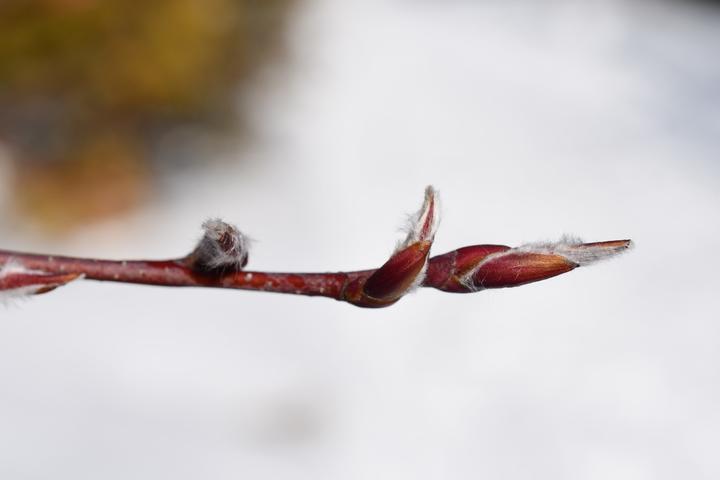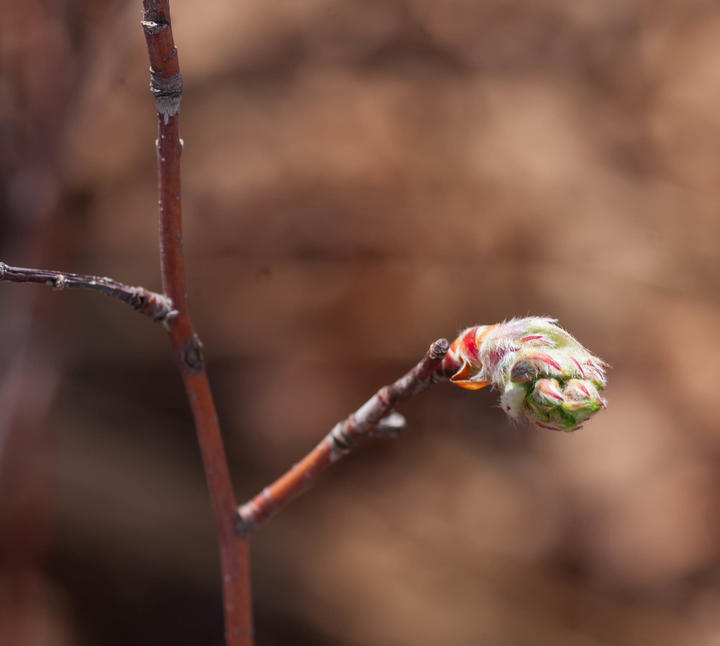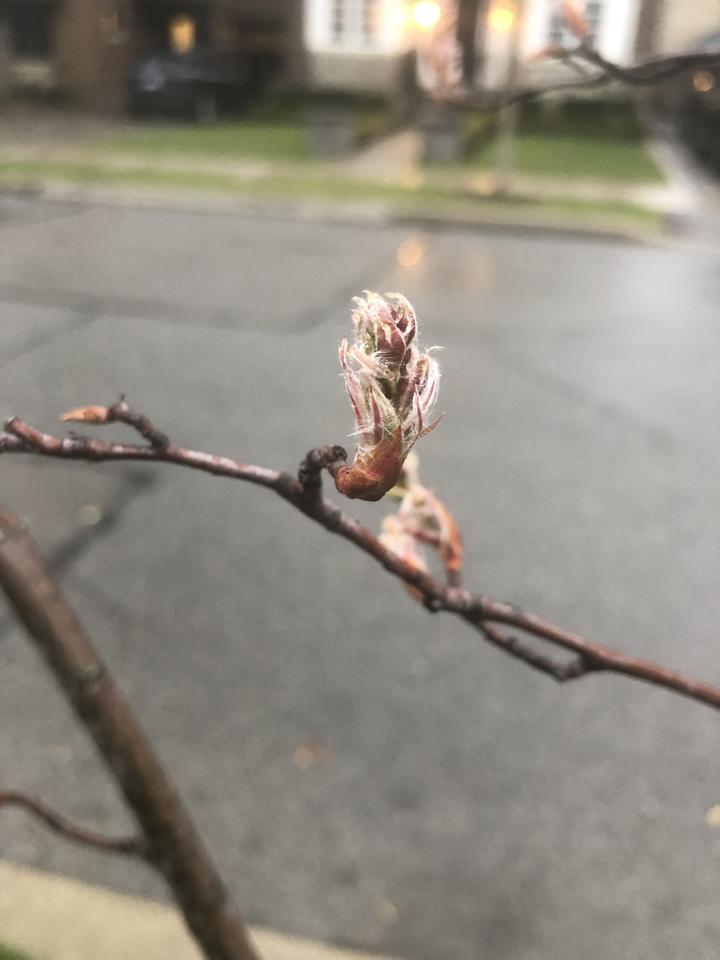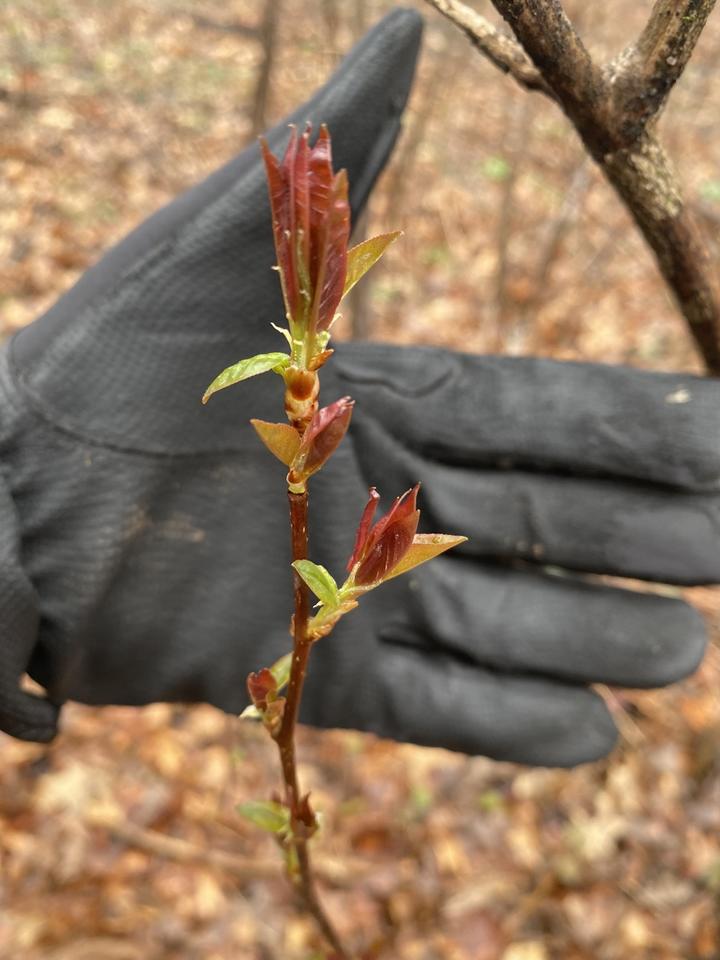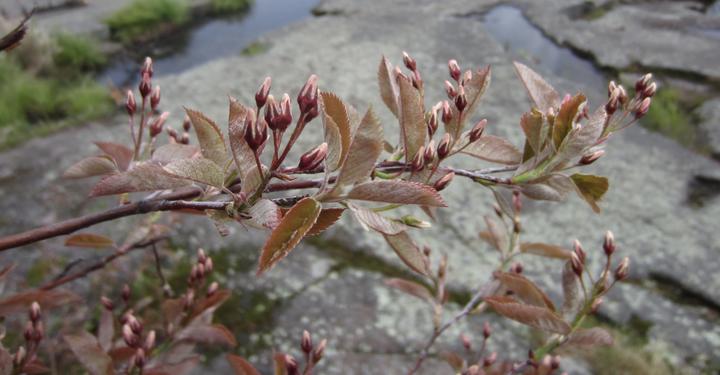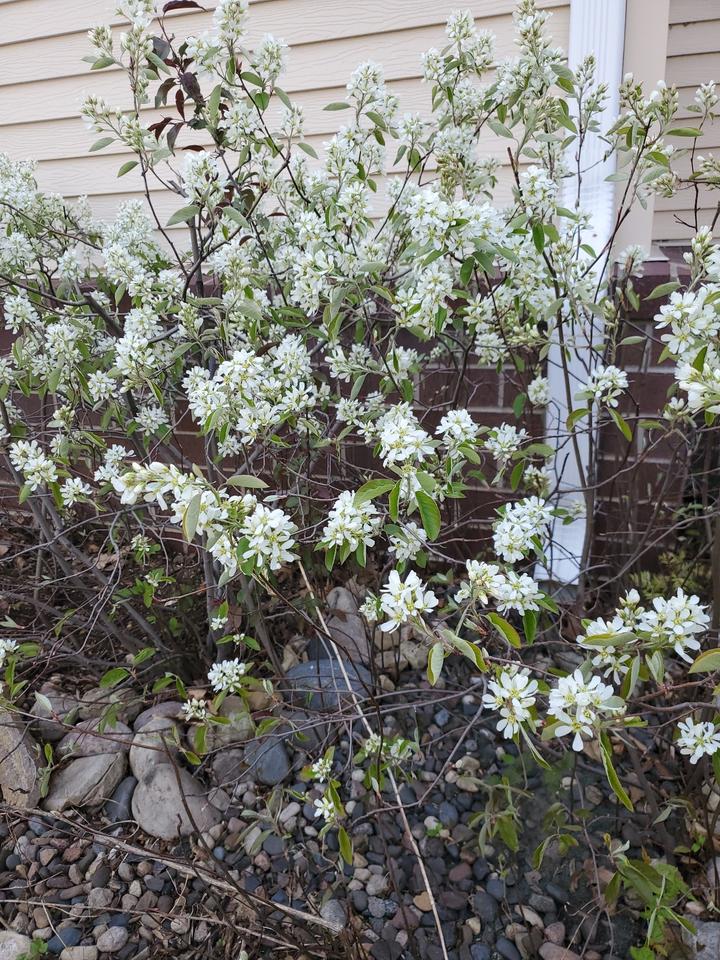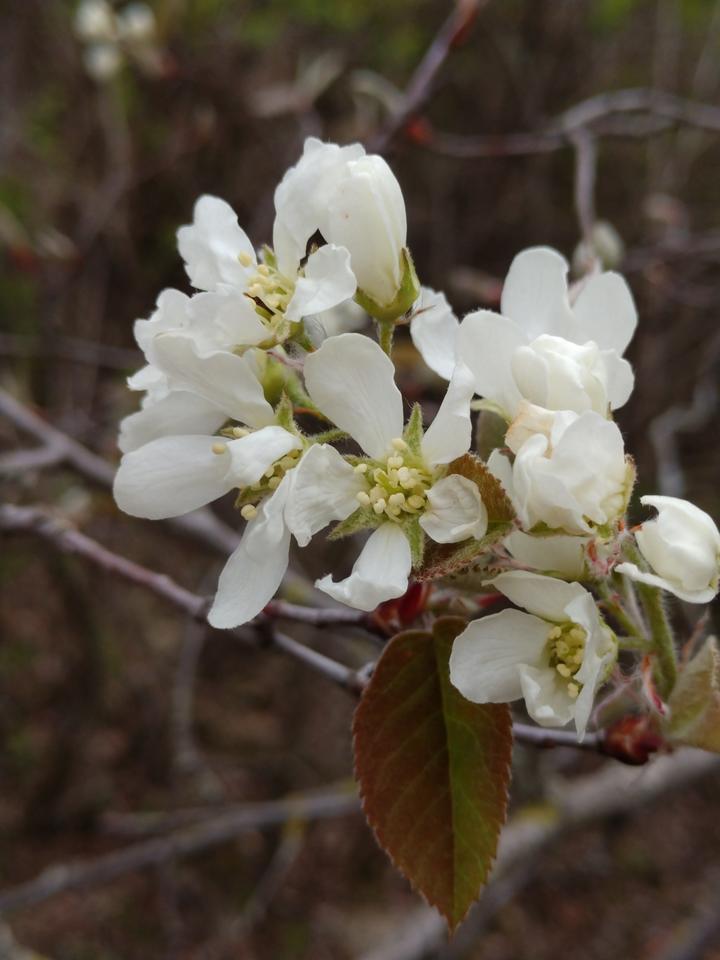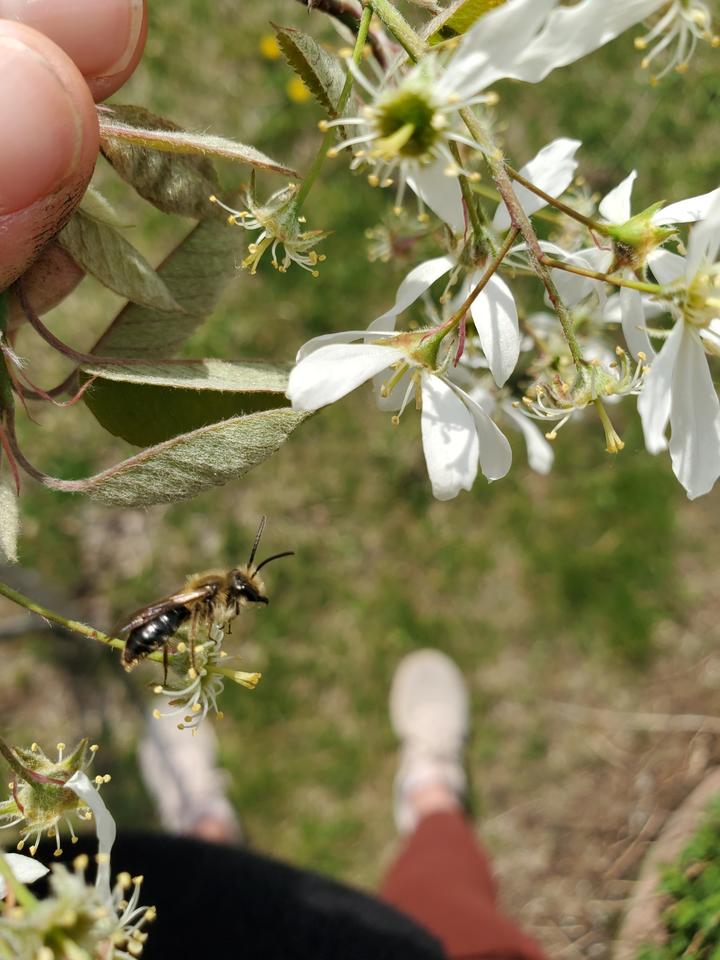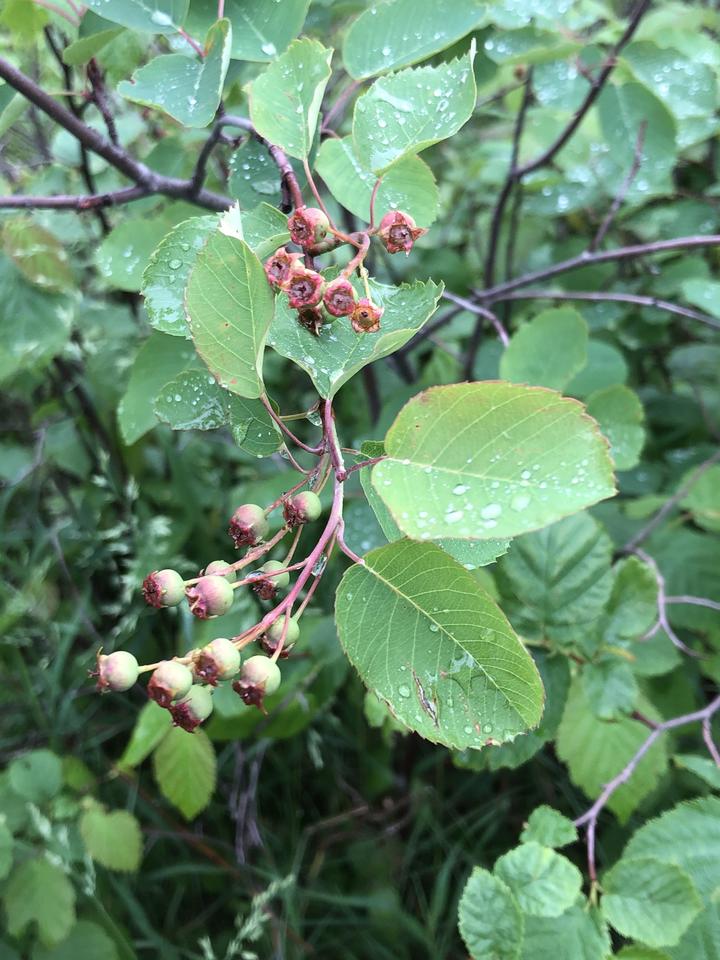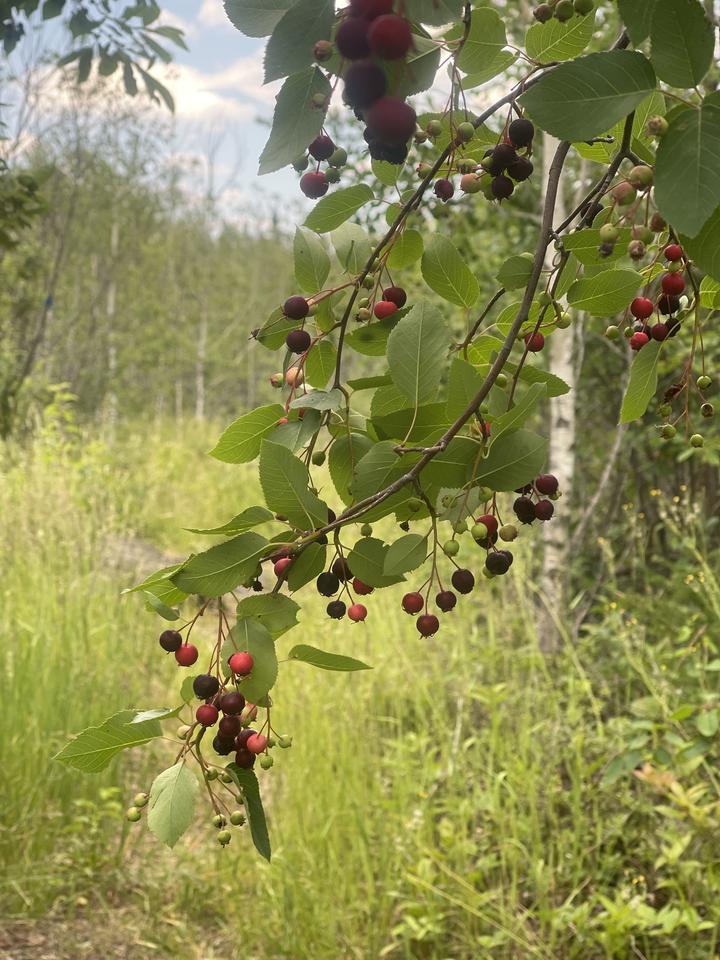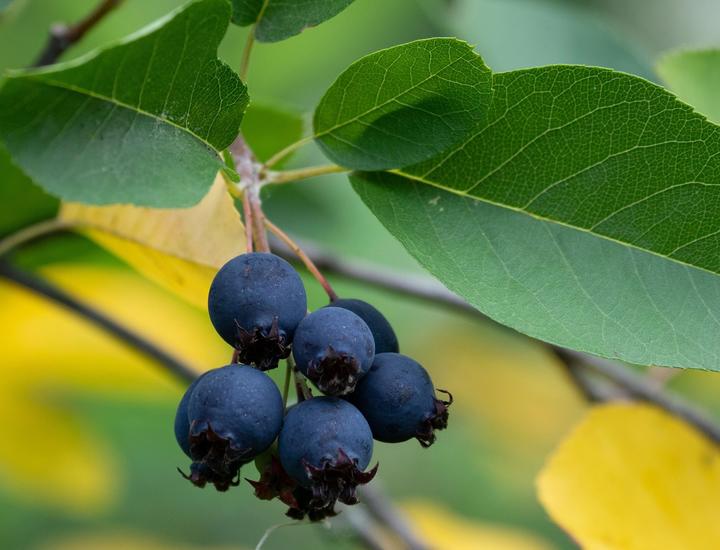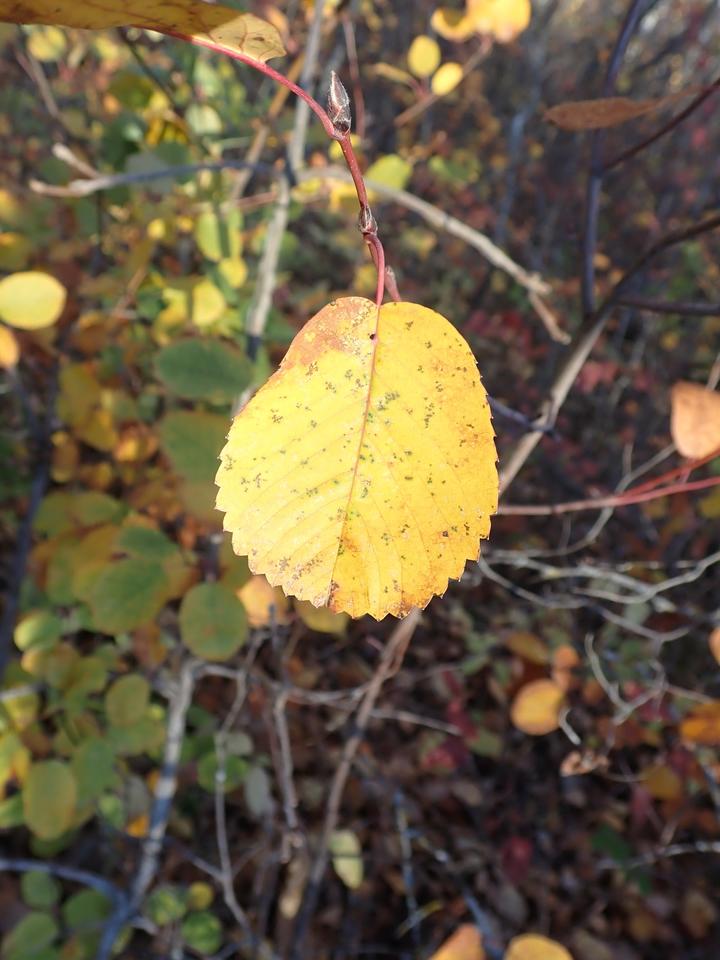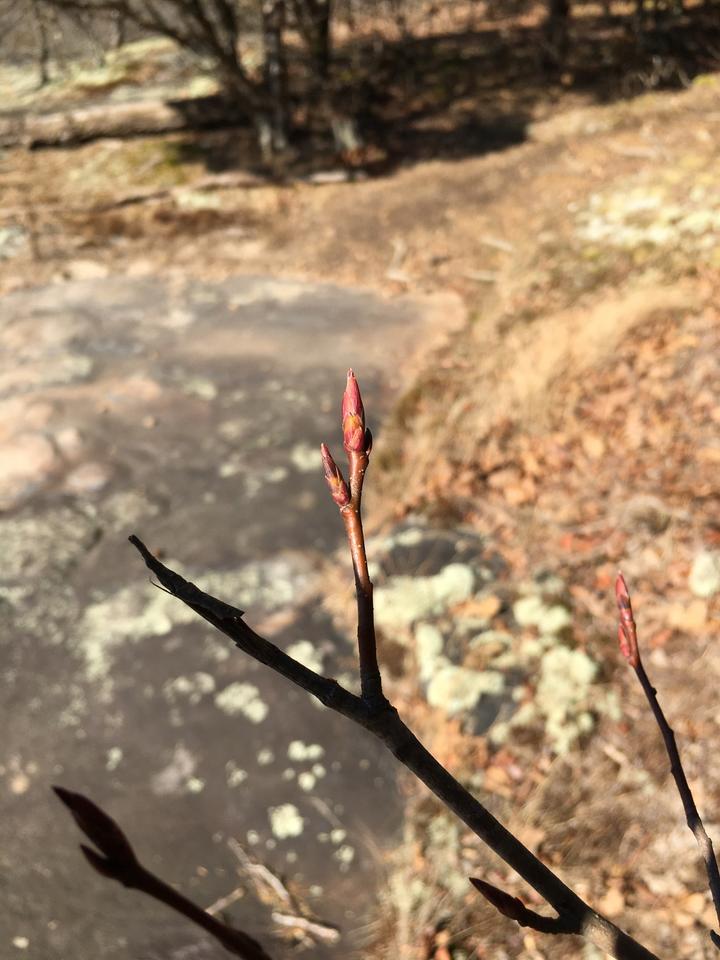More names for this plant
Anishinaabemowin: Gozigwaakomin or Ozigwaakomin (serviceberry); Gozigwaakominagaawanzh or Ozigwaakominaganzh (serviceberry bush)
The Dakota and Anishinaabe were among the earliest people to name Minnesota’s plants and animals, as well as to understand them in relation to Minnesota’s climate and seasons. Those original names are still in use, and several are included on the Season Watch website. However, complete translations were not available.
Latin (or scientific name): Amelanchier (Amelanchier is the name of a genus with many species, several of which live in Minnesota.)
The scientific community has a convention of assigning agreed-upon Latin names to every kind of organism. Using scientific names helps people communicate confidently about the same organism and organize lifeforms based on how closely related they are.
More common names: Juneberry, Saskatoon berry
Page contents
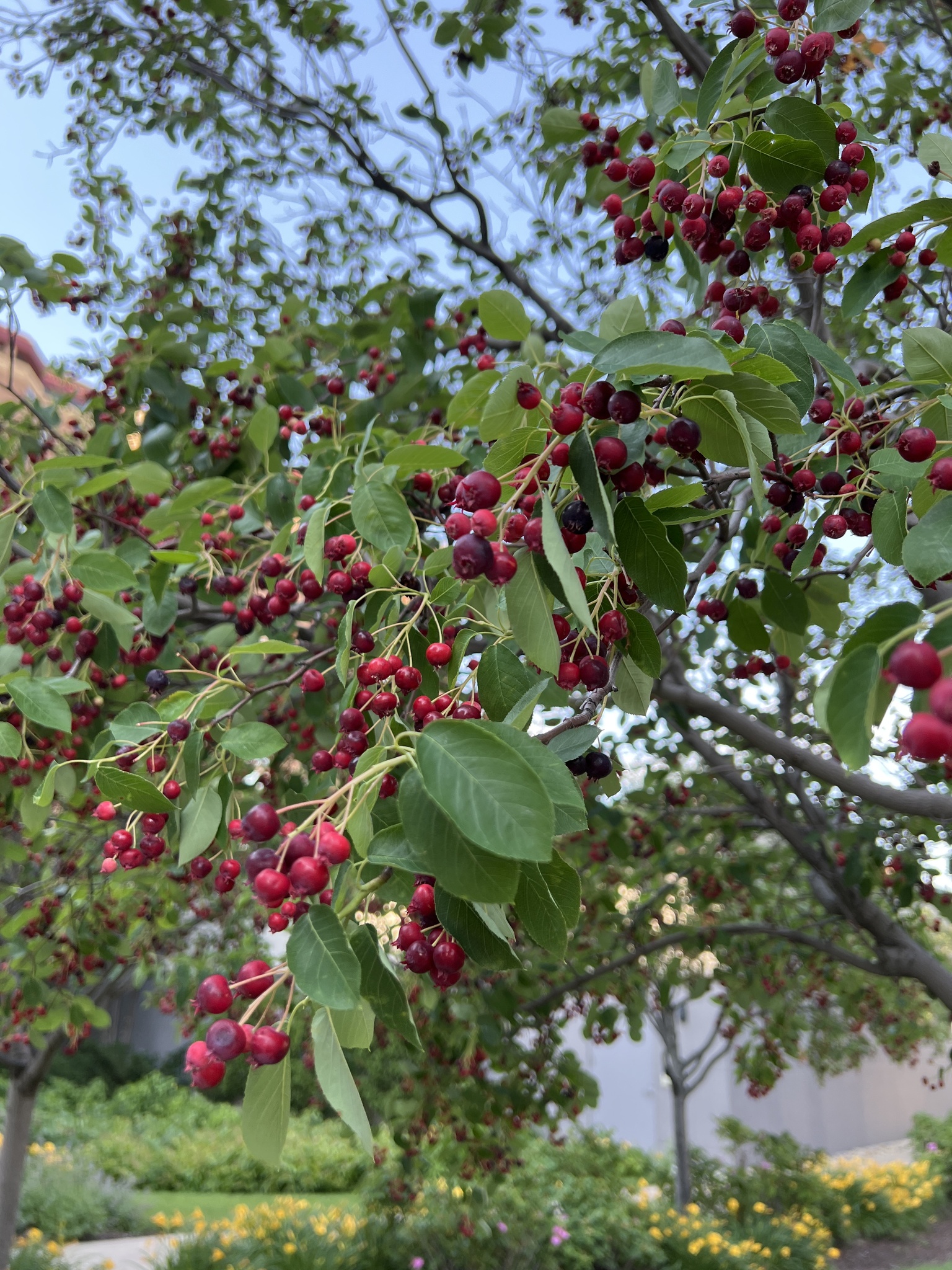
June 29, 2022, Olmsted County, Minnesota
Photo © hummingbirdwindsor, some rights reserved (CC-BY-NC)
iNaturalist observation
About the serviceberry
- Serviceberries are large, woody shrubs that grow up to twenty-five feet tall.
- There are twenty different species of serviceberries.
- Their white flowers bloom in spring, and in June they produce edible, dark purple berries.
- In the fall, its leaves turn bright colors, often red or yellow.
- In Minnesota serviceberries grow in the eastern half of the state.
- Folklore suggests that serviceberries get their name from funeral services. This is because by the time the ground thaws enough for burials, serviceberry flowers are in bloom.
Visual guide to phenology
Watch for the appearance of leaves, flowers, and fruits. Take notice of when flowers open and fruits ripen. The general guidance here applies to serviceberries generally and is not limited to a particular species.
Note to observers
This page explains general clues to watch for when observing serviceberry phenology. However, this page does not instruct observers on how to identify this plant or collect data in a standardized way.
- For help with identification, see Minnesota Wildflowers.
- For guidance on collecting data, see Nature’s Notebook.
Graphs and historical data
Note: The Orientation Center provides a map, as well as information on reading graphs; interpreting summary statistics, who collected the data and how; and how to download datasets for independent exploration.
Flowering of downy juneberry (Amelanchier arborea)
- Earliest: April 25 (occurred in 2010)
- Average: May 7
- Latest: May 19 (occurred in 2013)

More resources
Western juneberry (Amelanchier alnifolia) in the Minnesota Biodiversity Atlas
Common serviceberry (Amelanchier arborea) in the Minnesota Biodiversity Atlas
Smooth juneberry (Amelanchier laevis) in the Minnesota Biodiversity Atlas
Creeping or spicate serviceberry (Amelanchier spicata) in the Minnesota Biodiversity Atlas
Canadian serviceberry (Amelanchier canadensis) in Nature's Notebook
Keep exploring Season Watch
Keep exploring Season Watch
Co-author: Lynsey Nass, Minnesota Master Naturalist
